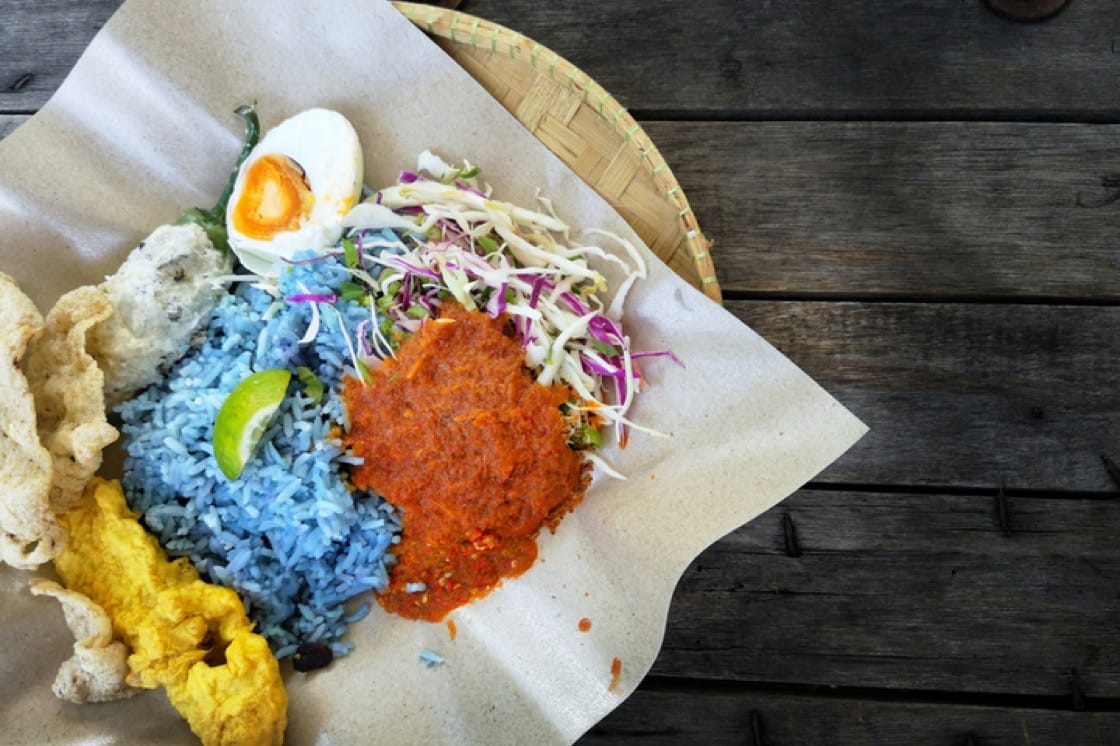Native to South-east Asia where the warm climate favours its growth, the bright blue petals from the flowers of the butterfly pea plant have traditionally been used as an ingredient in herbal teas as well as in cooking. The indigo flower imparts its beautiful blue colour when steeped in warm or hot water, making it a natural dye for various dishes and drinks.
As a natural litmus that changes colour when it comes in contact with acid, the eye-catching blue shade of butterfly pea flower extract and its mesmerising colour-changing properties have made it increasingly popular across the world. Last year, coffee giant Starbucks launched a limited-edition Butterfly Pea Lemonade Cold Brew that made its rounds on social media for its dreamy colour-shifting hues.

Culinary Uses Of Butterfly Pea Flower
In South-east Asia, butterfly pea flowers have long been used as a natural food colouring for food and drinks in Thai, Malay and Peranakan cuisines. The petals have practically no scent or flavour, making it the perfect food colouring agent for any dish or drink without changing its flavour. As a tea, it has a mild woody, earthy taste, not unlike green tea.
The flower is known as dok anchan in Thailand, where it is shredded into fine ribbons and added to rice salad, or its blue liquid extracted and steamed with jasmine rice. Many Thai resorts also greet guests with a welcome drink made from dok anchan and lemongrass. Traditional Thai snacks like steamed chaw muang dumplings and pale purple khanom chan cakes are coloured with butterfly pea flower extract.
In Malaysia and Singapore, it is known in the Malay language as bunga telang. It is used in Malay dishes such as nasi kerabu, pulut inti, kuih tekan and pulut tai tai, where rice is naturally dyed blue.


Behind Its Colour-Changing Properties
In 2015, Husk Distillers in New South Wales, Australia, launched Ink Gin which quickly gained attention for its eye-catching rich indigo hue in the bottle and its magical ability to change colour in the glass. The grain spirit is infused with 12 botanicals from around the world, including juniper berries, lemon myrtle, Tasmanian pepper berry, cardamom and, you guessed it, butterfly pea flower. The world’s first colour-changing gin turns from royal blue to blush pink when tonic or lemon is added to it.
The colour of butterfly pea tea changes depending on the pH levels of whatever it is mixed with. The blue colour changes to purple in the presence of a little acid, becoming hot pink as the acidity increases. To make an extract of butterfly pea flower for food colouring, steep about a dozen fresh or dried flowers in a cup of boiling water. After about 15 minutes, strain the liquid and discard the flowers. The deep blue water is then ready to be used as blue food colouring.
Different hues of red, purple and blue can be derived from the extract by changing the acidity of the liquid. Adding a dash of lemon or lime juice turns it into a purplish-red colour, while adding roselle hibiscus petals changes it to a bright red colour.

Used in traditional Chinese and Ayurvedic medicine, butterfly pea flower tea has been consumed for centuries as a brain booster, antidepresant and calmative agent. When steeped as a tea, butterfly pea flower makes for a calming caffeine-free herbal tisane that has similar antioxidant properties as green tea.
The blue flower is rich in anthocyanin, a potent antioxidant that is also what gives it its fascinating colour-changing properties. The antioxidants in butterfly pea can rejuvenate the skin by stimulating collagen synthesis and lessen the signs of ageing. The anti-inflammatory and analgesic properties of butterfly pea flower extract can also help alleviate pain and reduce fevers.

The butterfly pea plant grows as a creeping vine that winds its way up fences or poles, requiring little care when cultivated. As its name suggests, it is a legume and its fruits are long flat pods with peas inside that are edible when tender.
Once dried, the seeds can be planted in moist, well-drained garden soil and will start germinating in about two weeks. The hardy plant can be exposed to full or partial sunlight and its vines grow quickly and messily, so it is best to support them with sticks or train them to grow along a wooden trellis.
Not only do butterfly pea plants seem to thrive on neglect, being members of the legume family means that they have root nodules that contain rhizobium, a fungus that converts atmospheric nitrogen into usable nitrates that fertilise the soil. Because of this property, the butterfly pea vine can not only do well in poor soil, its growth also helps condition the soil and make it more fertile for other plants in a garden.
To promote bushy growth, pinch off the tips of the plant and harvest its flowers regularly so the vine does not go into seed production phase. The flowers can be harvested, dried in the sun and kept as a pantry staple for a very long time.





















